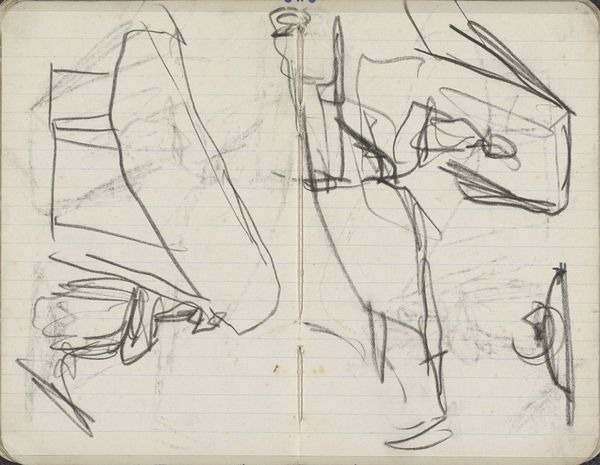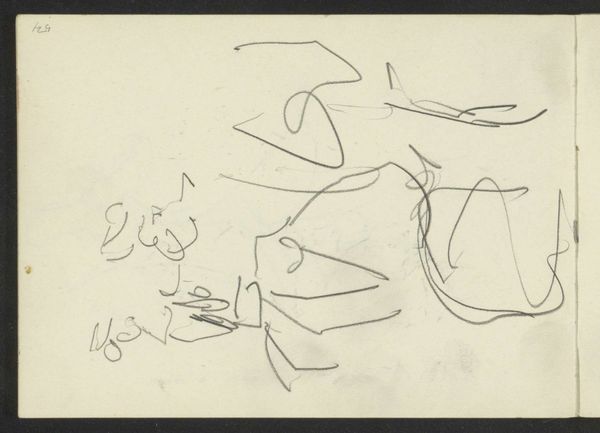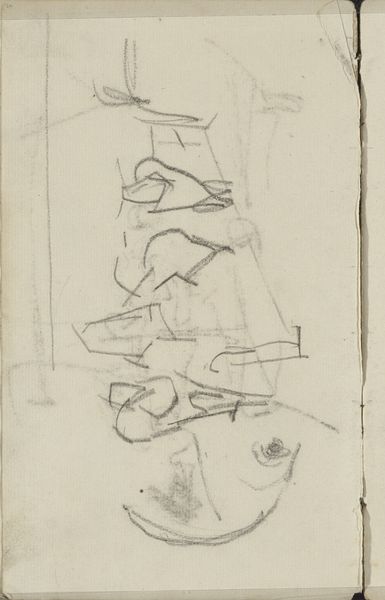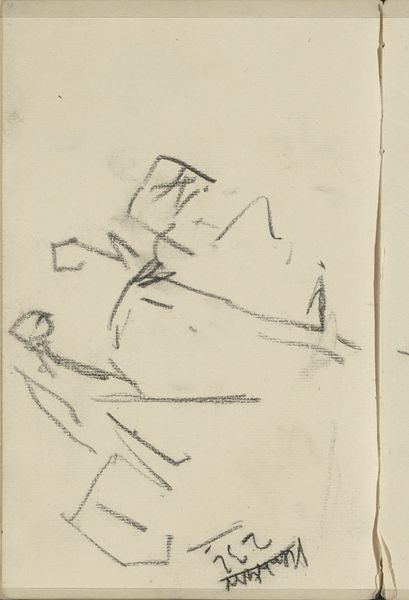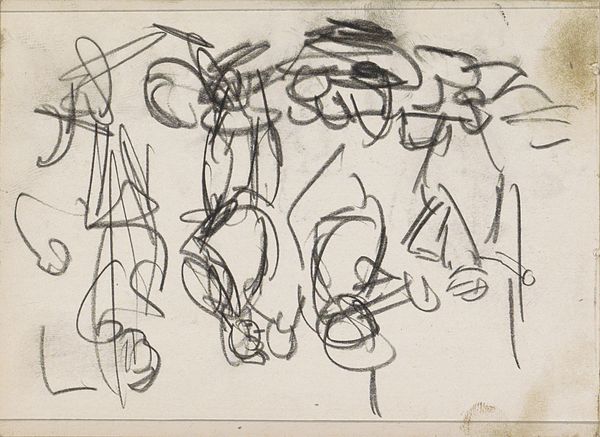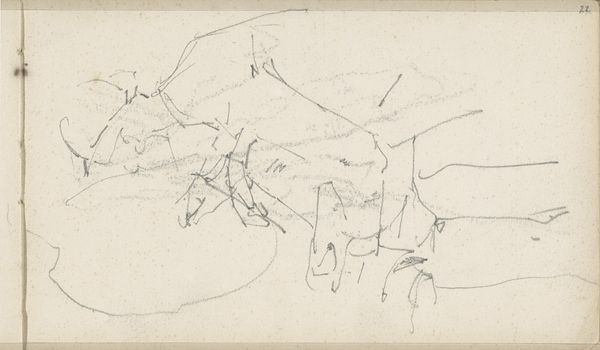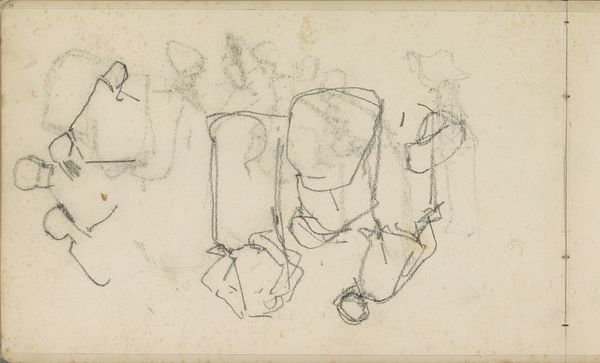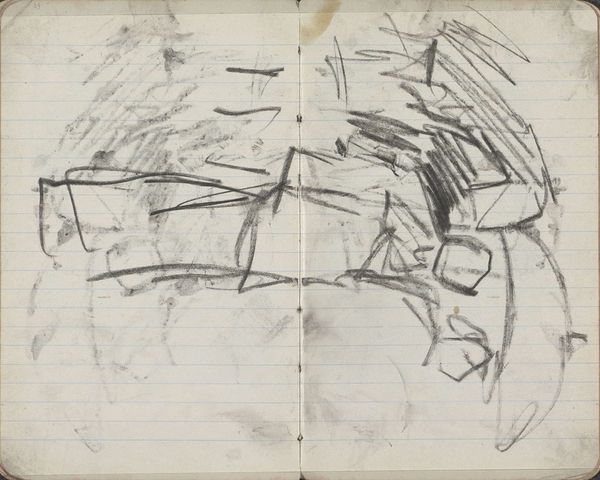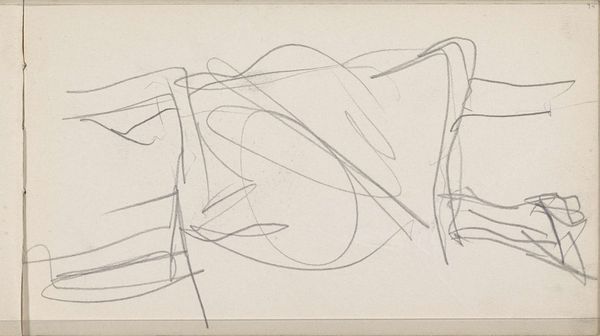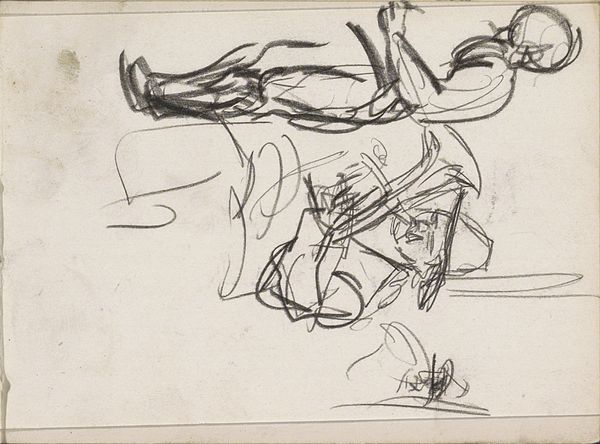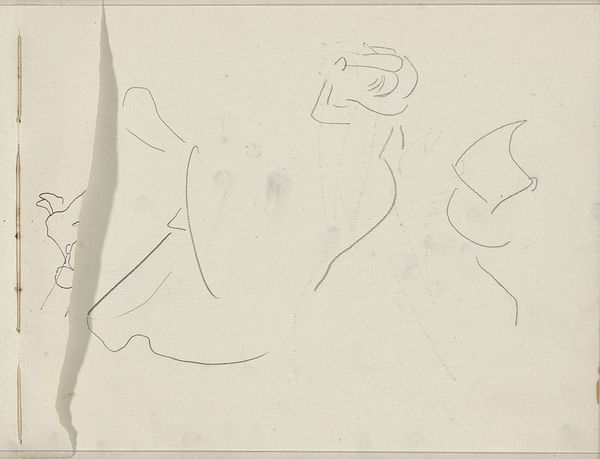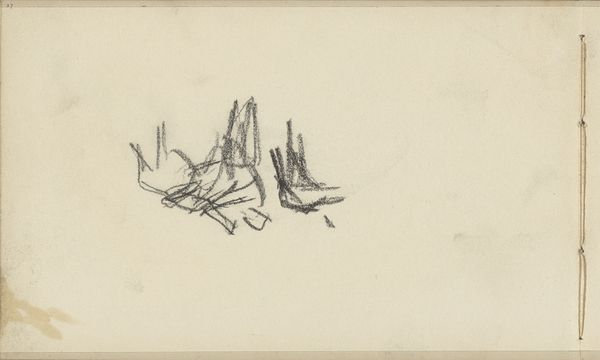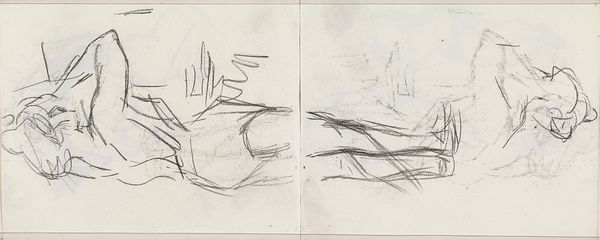
Copyright: Rijks Museum: Open Domain
Curator: Here we have “Figuurstudies,” or “Figure Studies,” a pencil drawing on paper by George Hendrik Breitner, dating roughly from 1898 to 1914. It's currently held in the Rijksmuseum collection. Editor: Wow, it’s incredibly loose! A flurry of lines capturing what feels like fleeting moments, the ghost of figures. I love the energy in such sparse marks. It feels almost... restless, or impatient? Curator: That impression aligns with Breitner's broader artistic project. He was deeply embedded in Amsterdam's urban environment, capturing everyday life with a particular focus on the working class. Sketches like these reveal his process. Editor: It’s like peeking over his shoulder in a cafe. I can almost feel him urgently trying to seize these characters. Curator: Precisely. There is a wonderful intimacy to studies like this, perhaps unintentional but they do give us privileged insight into the artist's initial perceptions of the subject. Consider this, particularly in the context of late 19th-century art education, drawing was paramount. Academic painting put the most weight on preparatory sketches. Breitner wasn’t afraid to show these raw preliminary workings, even years later, because for him they were of equivalent value to more resolved pieces. Editor: True. And the "finish" somehow feels secondary here. It's more evocative this way, more alive, the way a dream can feel more real than reality sometimes. It begs you to fill in the blanks yourself, adding to a story and personal feelings, so in that case I imagine he achieves precisely the reaction that he aimed to trigger! Curator: An intriguing perspective. I would only say this style of immediacy would come at the cost of Breitner courting social and artistic ridicule. It challenges classical notions of beauty and elevated subject matter, opting instead to present glimpses of contemporary life. It is therefore less about making an impression, but more about finding the raw emotional quality within each person that made his eye linger for a few seconds more. Editor: That’s what I mean! Beautiful things emerge in art not just from beauty, but from feeling things very strongly. From observing ordinary moments that many would probably gloss over, too caught up in their lives to appreciate a passing face. That he noticed them at all is very touching. Curator: Agreed. It prompts us to question whose lives are deemed worthy of representation and how art can reflect broader societal shifts. Editor: I'll keep looking at art with those eyes, the world is too beautiful not to. Thanks. Curator: And that is something George Hendrik Breitner no doubt also felt, a reason to be so keenly aware of the times and world that swirled all around him. Thank you for listening.
Comments
No comments
Be the first to comment and join the conversation on the ultimate creative platform.
